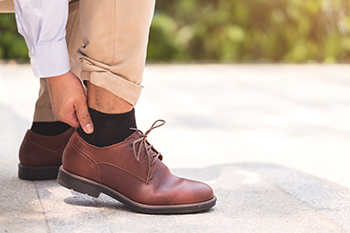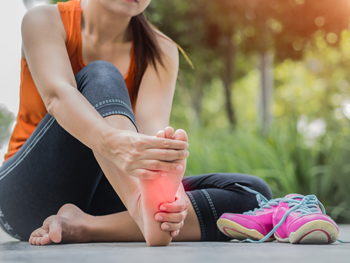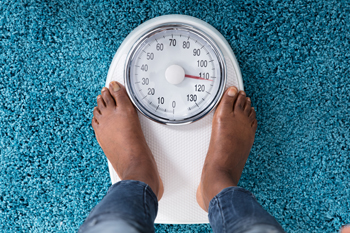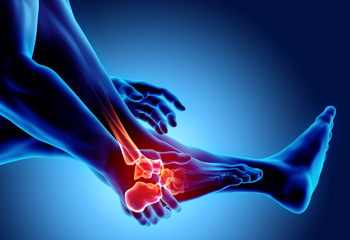
The feet are central to supporting the body and getting from place to place. If one stands for long hours, a strain is put on the feet and legs and can lead to health problems and foot pain. Foot ligaments and tendons can get irritated causing conditions like plantar fasciitis, Achilles tendonitis, bunions, hammertoes, corns, and calluses. Wearing properly fitting, supportive shoes, shoe inserts, compression stockings, and standing on mats versus concrete floors can help. Changing positions, moving about, and stretching frequently can also reduce problems created by prolonged standing. If you have ongoing foot pain created from working on your feet, speak to a chiropodist who can treat foot problems you have or otherwise advise you on how to minimize foot discomfort.
If you stand all day, you may be at an increased risk of developing various foot conditions. If you are experiencing foot pain of any kind, please consult with one of the chiropodists from The Footcare Centre. Our chiropodists will assess your condition and provide you with quality foot and ankle treatment.
What Foot Problems Are Caused by Standing?
Standing all day at work may increase your risk of developing foot or ankle problems.
Some common foot conditions that may arise from spending all day on your feet include:
Foot pain
Blisters
Corns and calluses
Arthritis
Flat feet
Bunions
Sprains
Athlete’s foot
Prevention
If you stand for prolonged periods of time for work, taking preventative measures to preserve the health of your feet is strongly recommended.
Measures you can implement to help prevent foot problems include:
Wearing shoes that are comfortable and fit well - these shoes should be made of breathable materials and provide you with arch support and cushioning. It is best to avoid shoes that have heels or narrow toe boxes.
Taking breaks to rest, walk, and stretch your feet throughout the day
Maintaining good foot hygiene - wash and dry your feet thoroughly every day
If you have any questions, please feel free to contact our office located in . We offer the newest diagnostic and treatment technologies for all your foot care needs.





